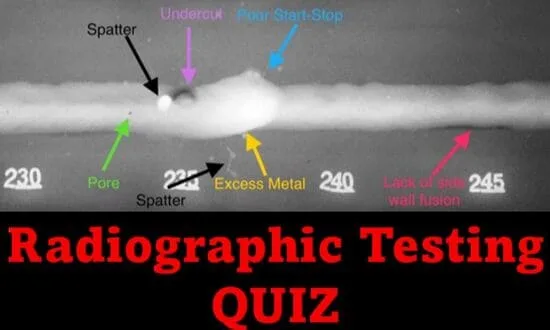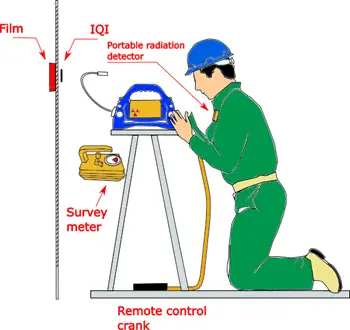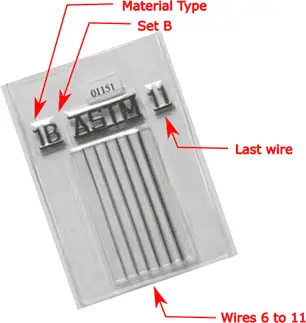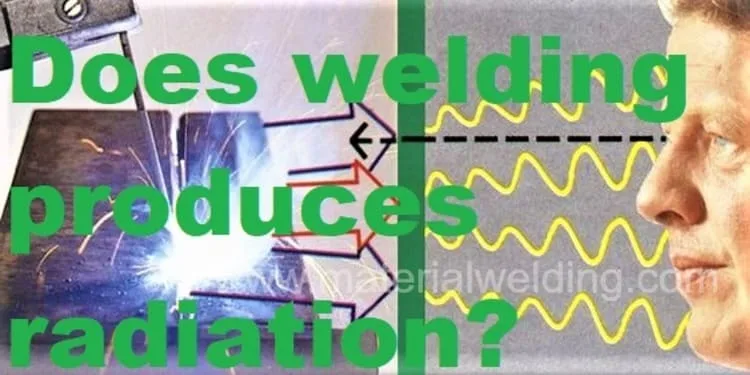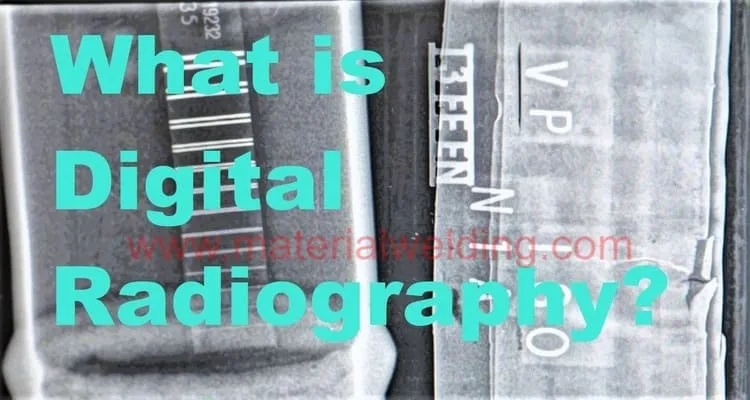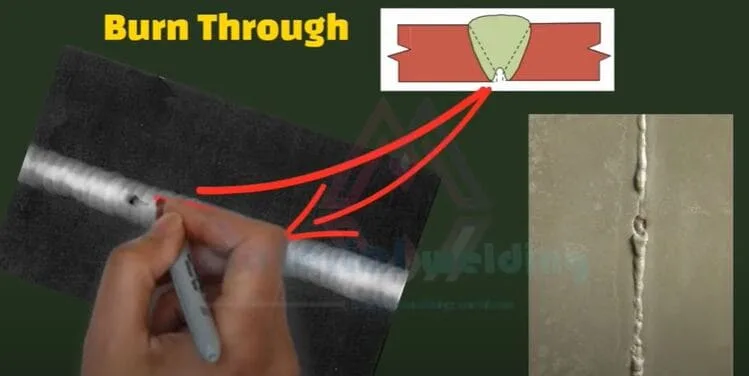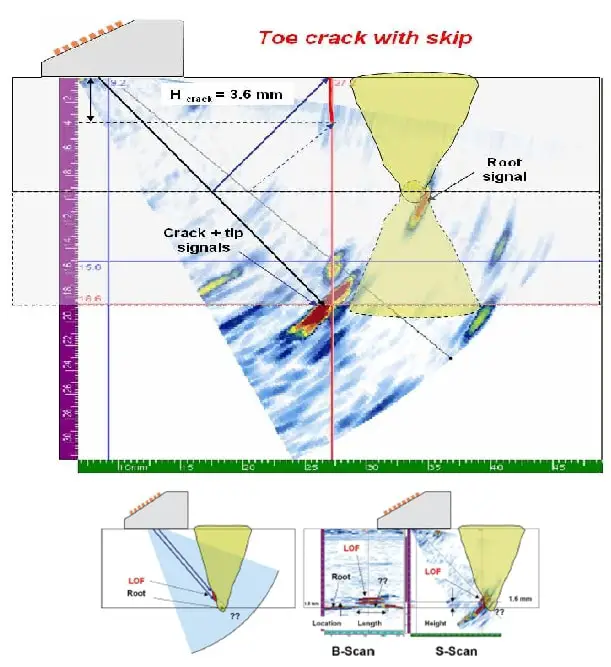What is Exposure Time in Radiographic Testing or RT?
Simply put Exposure Time in radiographic testing (called ET) is the duration usually in seconds or minutes when the radiographic film is exposed to the ionizing radiations, either in X-rays or Gamma-rays inspection.
Selection of the appropriate exposure time often involves trial and error methods as well as mathematical calculations. Various factors can affect the final RT film density result, such as:
- The spectrum of energy generated by the x-ray machine
- Voltage potential (KeV) is used in an x-ray machine.
- Amperage (mA) is used in an x-ray machine.
- RT exposure time.
- Source to film distance (SFD).
- Type of material to be radiographed.
- Material thickness via the radiation will pass during the test.
- The total quantity of scattered radiation reaching the film.
- Type of RT film.
- Condition of chemicals used for film processing, its concentration & time in contact.
How to calculate exposure time in radiography?
To calculate exposure time in radiography, first determine the type of machine being used and then find the manufacturer’s recommended settings for that machine.
Formula for exposure time in radiography calculation is given below.
On phone you can calculate exposure time using GE Calculator (android app link). For apple store, click here.
Exposure Time Formula & Calculation
The Exposure Time formula to calculate the time for the Radiographic film exposure in minutes is given below.

Here, FF: is Film Factor
SFD: Source to film distance
RHM: Rotegen per hour at 1 meter for the source being used.
Film Factor in Radiography Testing (RT)
Film Factor is the Exposure amount (R)/ unit zone of the radiographic Film necessary to give a required optical density in the radiographic testing.
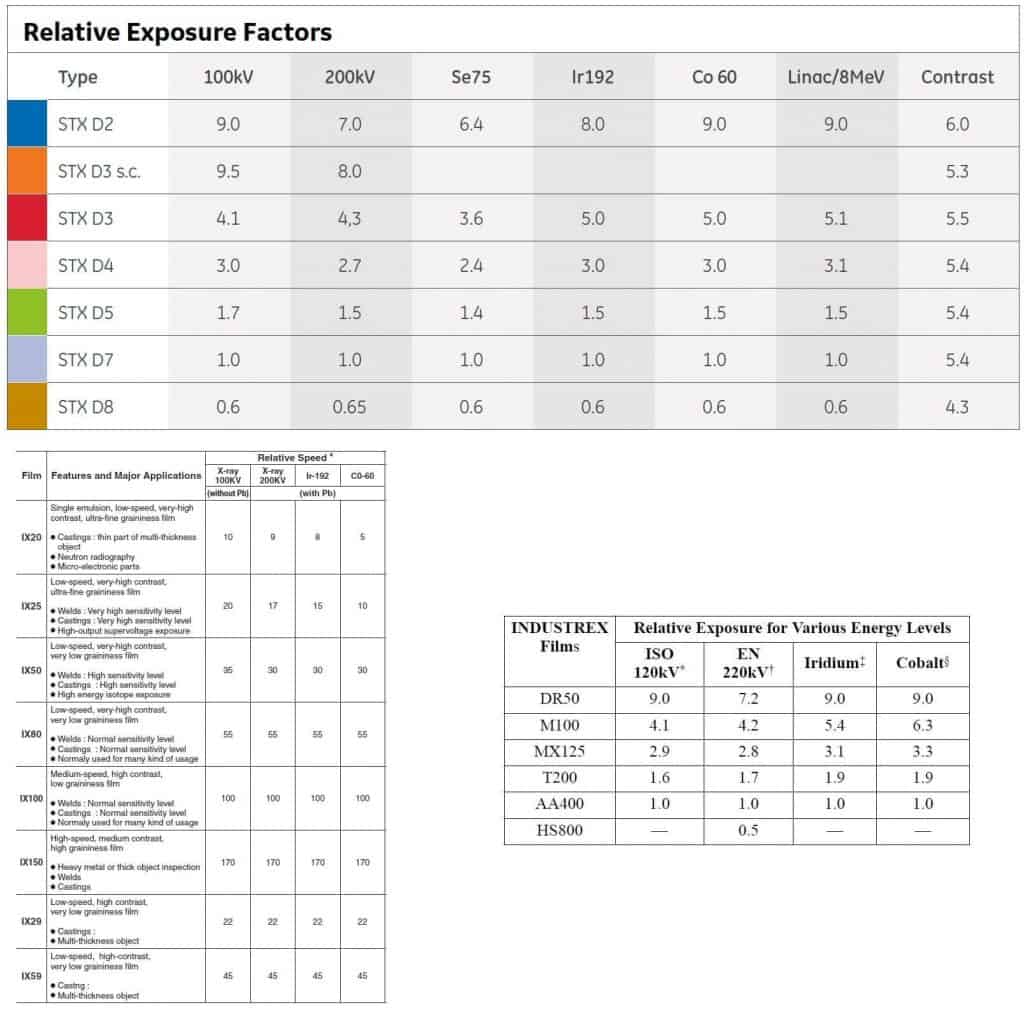
What is SFD or Source to Film Distance?
Source to film distance or simply called SFD refers to the gap measured between the RT film being exposed by the radiation & the source.
It is measured towards the radiation direction. SFD is the sum of Source to object distance (SOD) plus Object to film distance (OFD).
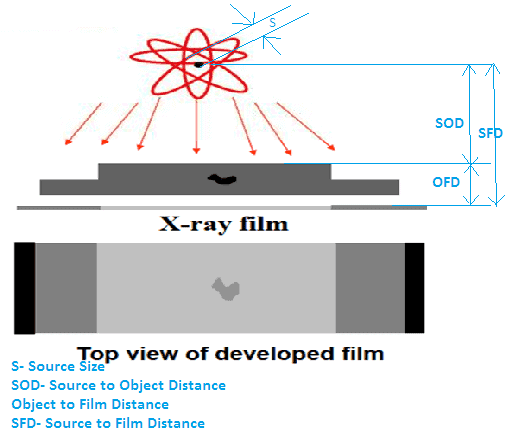
How to calculate SFD in radiography?
SFD, or the source-to-film distance, is one of the most important factors in radiography. It determines the amount of radiation that will be absorbed by the film, and thus affects the quality of the image.
Here are some tips on how to calculate SFD:
First, measure the object to film distance (OFD) you are trying to radiograph. This will give you an idea of how far away you need to be from it.
Next, measure the source to object distance (SOD). then:
- SFD: SOD + OFD
The source-film distance (SFD) is an important parameter in radiography because it determines the amount of radiation that reaches the film. A larger SFD results in less radiation exposure.
What is Half Value thickness (HVT) in RT?
HVT is the term used in Radiography testing to represent the reduction of radiation intensity via certain important materials.
This is an important factor in designing the RT enclosure rooms or source containment devices. A simple explanation of Half value layer thickness is given in the below sketch.
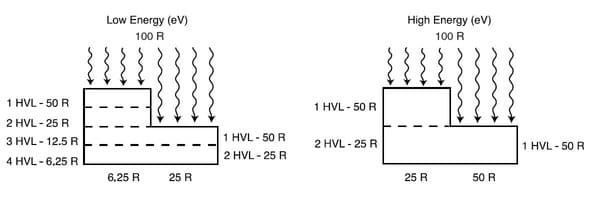
Half-Value Layer thickness or HVT is the term related to radiation penetration ability in different materials.
HVT is the thickness of a material, generally known as an absorber, required to minimize the radiation intensity to 1/2 of its initial strength. HVT of various media used in RT is given in the below table.
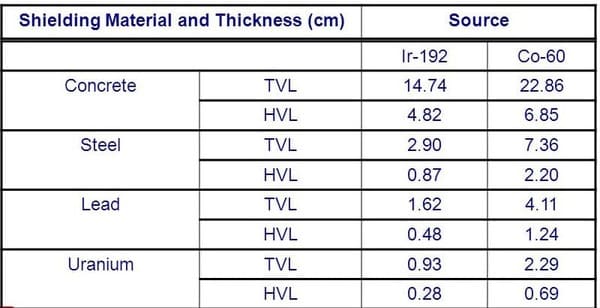
Curie (Ci) of the Source
The unit of the radioactivity of the source (Radiation Source decay) is Curie. When we purchase a radiography gamma-ray source, the manufacturer provides a chart known as Decay Chart applicable for that specific source.
You can use this chart to find the Curie value of the source with the help of the half-life formula given below:
Current Activity (A) of the Source = Ao/ 2e
In this formula, Ao is the original Activity of the isotope & e= Hour / HVT.
Half-Life (HL) of the radiation source
Half-life (applicable only for gamma radiation) is the time period for the radiation isotope ”By which duration radioactive source/ isotope get 50% (reduced to 1/2) decayed to its original strength.
The 2-half life means that the isotope has decayed 75% & has remaining source strength of 1/4th of its initial strength. The half-life of various RT sources is given in the below table.
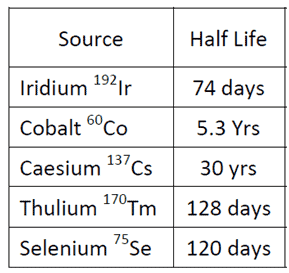
The half-life of the RT source affects the duration of radiographic exposure as with a decrease in source activity there will be fewer photons emission from the source.
This will result in a longer exposure duration required for the RT Test.
Similar Posts:
